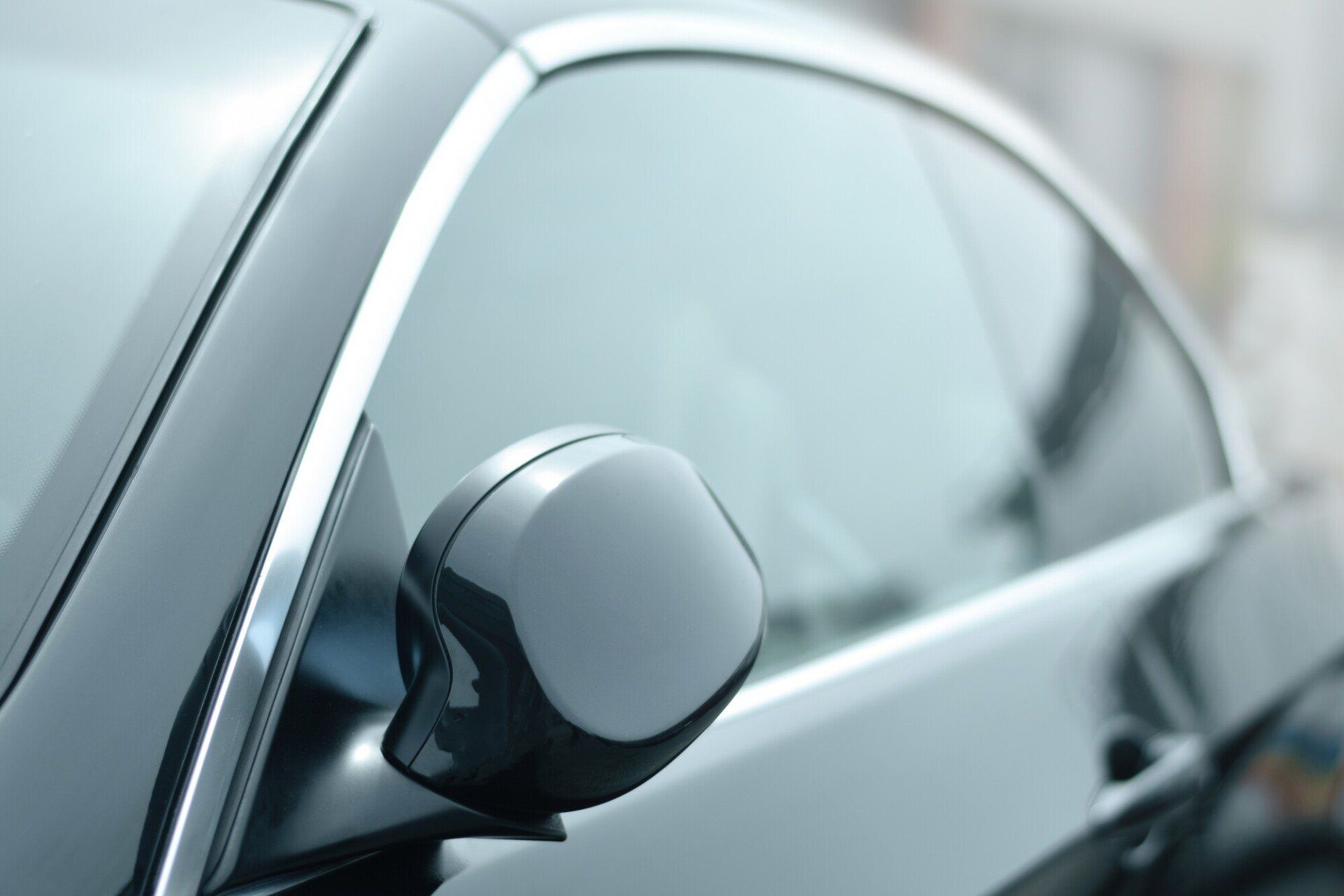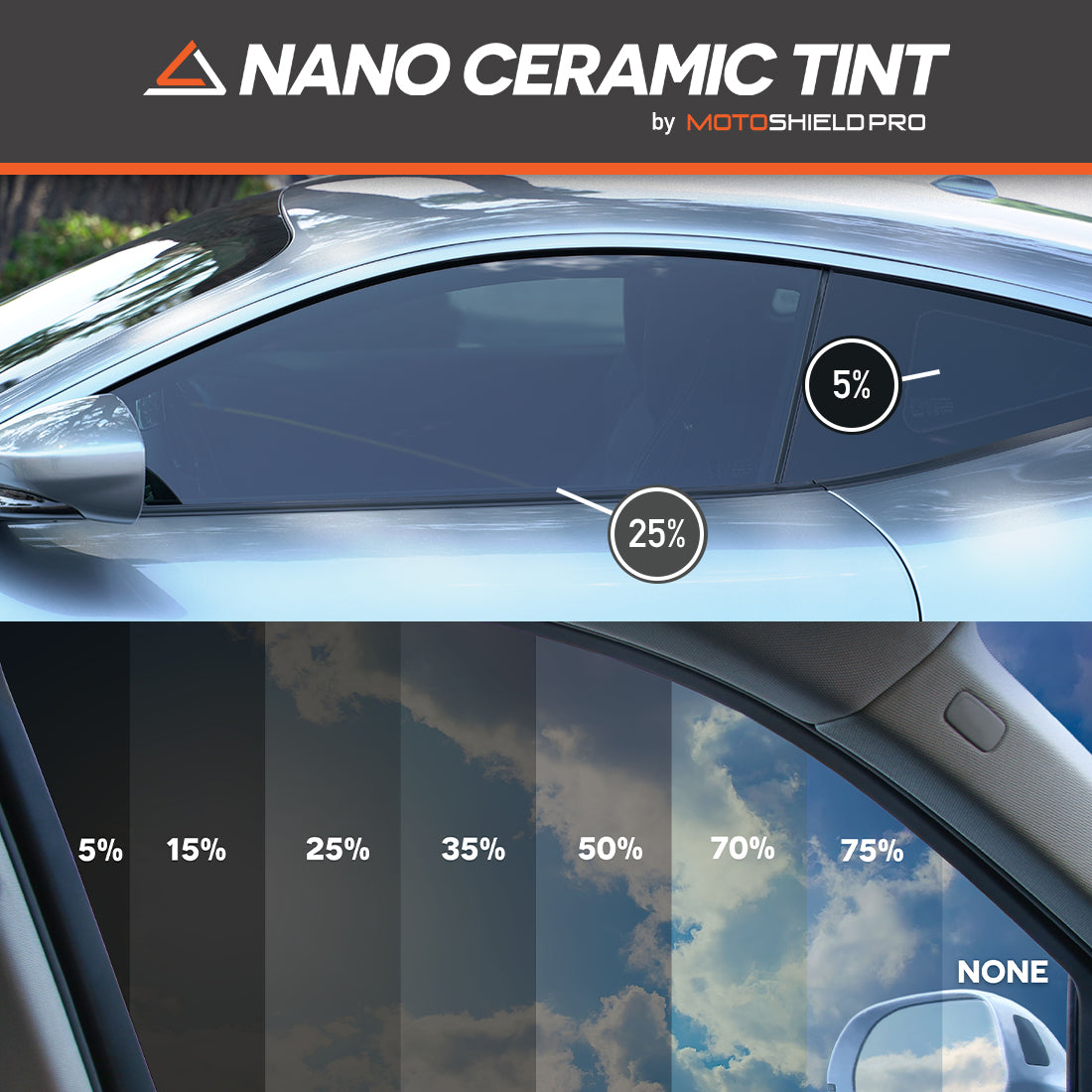Every little thing You Need to Find Out About Car Home Window Tinting for Your Car
Vehicle home window tinting is a practical enhancement for several car proprietors. It offers advantages such as enhanced convenience and power effectiveness. Numerous color films deal with various needs and preferences. However, comprehending lawful laws and choosing the appropriate tint portion is important. The installation process and correct maintenance likewise play substantial roles in making certain the long life of the tint. What various other factors should one consider prior to choosing on window tinting?
Advantages of Car Home Window Tinting
Some car owners may neglect it, vehicle home window tinting offers countless benefits that improve both the driving experience and the automobile's long life. Among the main benefits is the reduction of warm build-up inside the lorry, permitting a more comfortable trip, specifically throughout warm climate. This can result in decreased dependence on air conditioning, enhancing fuel efficiency.Additionally, window tinting offers defense against unsafe UV rays, which can create skin damages and fade indoor products gradually. By blocking these rays, the color aids maintain the automobile's interior and maintain its resale value.Moreover, colored windows can improve personal privacy and safety, as they make it a lot more challenging for outsiders to see inside the car. This included layer of security can hinder prospective burglary. On the whole, auto window tinting acts as a useful investment that contributes to the car and both comfort's overall health.
Sorts Of Home Window Tint Films
When thinking about car home window tinting, car proprietors come across a variety of home window color movies, each created to meet specific requirements and preferences. The initial classification is dyed home window film, which provides a fundamental level of personal privacy and UV protection while being cost-effective. Next off, metalized films integrate small metallic bits, reflecting heat and enhancing longevity, although they may disrupt digital signals.Ceramic films are an additional alternative, recognized for their remarkable heat being rejected and clarity, providing high performance without signal interference. Finally, crossbreed movies combine attributes of colored and metalized movies, striking an equilibrium between expense and performance. Each kind of window color movie presents unique benefits, permitting vehicle proprietors to pick based on their details requirements, such as warm look, spending plan, and control factors to consider. Comprehending these options is essential for making an informed decision relating to vehicle home window tinting.
Understanding Legal Rules
When considering automobile home window tinting, it is critical to recognize the lawful guidelines that regulate color darkness limits and windshield color needs. These laws can differ significantly from state to state, influencing what is permissible for car owners. Familiarizing oneself with these laws guarantees conformity and aids stay clear of possible penalties or charges.
Tint Darkness Restrictions
Exactly how can car owners assure they stay compliant with local regulations pertaining to home window tinting? Comprehending tint darkness restrictions is crucial. Each state has certain guidelines that dictate the permissible degrees of darkness for home window colors, which are determined by Visible Light Transmission (VLT) portions. Normally, front-side home windows have to permit a higher percentage of light contrasted to rear windows. For example, some states might allow just 30% VLT for front windows, while the rear windows might be allowed to have especially darker tints. To ensure compliance, lorry owners should speak with state standards or regional police for exact info. Additionally, accredited tinting specialists can provide understandings about lawful limitations, ensuring that car owners make notified choices.
Windshield Tint Rules

State-Specific Legislations
Guiding through the landscape of state-specific regulations relating to car home window tinting requires cautious attention to detail, as laws can vary considerably from one state to another. Each state has its very own collection of guidelines regulating allowable tint percents, sorts of products, and positioning on car windows. Some states allow darker colors on back home windows while banning them on front home windows, while others have more stringent total limitations (automotive window tinting clinton township). In addition, particular states mandate using details products or call for certification from installers. Failure to follow these policies can lead to fines or the necessity to remove non-compliant tint. Vehicle owners must consult their state's Division of Motor Autos or pertinent authority to assure adherence to regional laws.
Choosing the Right Color Percent
When selecting the right color portion for a lorry's home windows, one have to take into consideration various variables that impact both visual appeals and functionality. Color percentages generally vary from 5% to 70%, with lower percentages giving darker shades and greater percents allowing extra light in. A darker tint can improve privacy and lower glow, while a lighter tint can keep visibility and adhere to legal restrictions.Furthermore, personal choice plays a significant duty in this decision. Some individuals might prefer the streamlined appearance of darker colors, while others could prefer an extra open, airy feeling. Furthermore, the lorry's function should be thought about; for circumstances, those using their lorries for industrial objectives might choose lighter colors to maintain a specialist look.Ultimately, the right color percentage equilibriums individual style, convenience, and adherence to regional policies, ensuring a rewarding tinting experience.
The Installation Process
A successful installation of window tint requires cautious focus to detail and the right devices. The process usually starts with detailed cleansing of the home windows to remove dust, dirt, and debris, guaranteeing correct attachment of the movie. Once the surfaces are prepared, the installer measures and cuts the color movie to fit each window accurately.Next, the film is positioned on the glass, usually making use of a solution to promote very easy change and stop air bubbles. Warm is often put on the film to conform it to the home window's contours, improving its look and durability. After validating a seamless fit, the installer carefully cuts basics any kind of excess film along the edges.Finally, the installer checks for blemishes and confirms all edges are secure. This thorough technique is necessary not only for looks however also for attaining the desired performance advantages of window tinting, such as UV protection and warmth reduction.
Upkeep and Look After Tinted Windows
Appropriate upkeep and care are essential for maintaining the stability of colored home windows. Reliable cleansing methods, the avoidance of hazardous chemicals, and normal assessments for damage play important roles in making sure longevity. By adhering to these standards, automobile owners can preserve the useful and aesthetic advantages of their window color.
Cleansing Techniques for Color
Maintaining the clearness and long life of tinted windows calls for specific cleaning strategies tailored to the film's delicate surface area. It is essential to make use of a soft microfiber cloth to prevent damaging the tint while cleansing. A mild service of water and a couple of drops of moderate dish soap can properly get rid of dirt and gunk. It is suggested to use the cleansing service to the fabric, instead than straight onto the tinted surface, to prevent moisture from leaking right into the sides of the movie. Gentle, circular activities need to be utilized to cleanse the windows completely. Routine cleansing assists keep visibility and avoids accumulation, making certain that the tint remains in prime condition in time. Following these methods will extend the life of tinted windows.
Avoiding Unsafe Chemicals
Although many home cleaning products are reliable on different surface areas, they can position substantial risks to tinted windows. Chemicals such as ammonia, bleach, and specific solvents can break down the tint film, causing discoloration and peeling. Individuals should opt for pH-balanced cleaners especially made for tinted windows. In addition, making use of soft microfiber fabrics will aid stop scratches and keep the color's integrity. Regular maintenance is important; consequently, staying clear of extreme scrubbing or unpleasant materials is vital. It is a good idea to here read product tags very carefully to confirm compatibility with home window tints. By selecting the appropriate cleaning solutions and devices, car owners can maintain the appearance and capability of their tinted home windows, guaranteeing a much longer lifespan and height performance.
Inspecting for Damages
Routine inspections of colored windows are essential for recognizing any type of signs of damages that may endanger their performance and appearance. Owners should seek gurgling, peeling, or staining, as these concerns can show bad setup or direct exposure to unsafe components. It is a good idea to inspect the sides of the film where peeling might begin and examine for any scrapes that could influence exposure. In addition, ultraviolet (UV) rays can trigger the color to deteriorate gradually, so checking its efficiency in blocking UV light is vital. If any damages is identified, prompt action needs to be taken, which may include expert repair or replacement. Preserving tinted windows not only enhances aesthetics but also assurances continued security for both travelers and the automobile interior.
Common Myths About Home Window Tinting
What mistaken beliefs border home window tinting for automobiles? Several people think that all home window tints are unlawful, but regulations differ by state, enabling details degrees of tinting. An additional typical myth is that darker tints obstruct even more heat; however, the performance of home window films depends on their innovation rather than darkness. Some individuals also think that window tinting is solely for aesthetics, neglecting its benefits, such as UV defense and glow decrease. In addition, lots of presume that window tinting will certainly damage their vehicle's glass, yet expertly applied colors can in fact improve glass toughness. Lastly, there is a belief that home window tints block exposure, yet top quality movies are created to preserve clear sightlines while giving personal privacy. Comprehending these myths assists consumers make notified choices relating to window tinting, guaranteeing they delight in the complete range of advantages it offers.
Often Asked Questions
Exactly How Lengthy Does Window Tinting Normally Last?
The durability of home window tinting varies based upon aspects such as installation high quality, film kind, and environmental conditions. Normally, top web link notch tint can last anywhere from 5 to 10 years before calling for replacement or reapplication.
Can I Remove Home Window Tint Myself?
Removing home window tint oneself is feasible, though it may be difficult. People need to use a warm resource and glue eliminator to relieve the procedure, however care is recommended to stay clear of harming the car's glass or inside.
What Equipment Are Needed for Do It Yourself Home Window Tinting?

Will Home Window Tinting Damage My Auto's Glass?
Window tinting, when applied properly, normally does not harm a vehicle's glass. Incorrect installation or low-quality movies may lead to peeling off, gurgling, or damaging, possibly endangering the integrity of the glass over time.
Can Tinted Windows Influence My Vehicle's Resale Value?
The effect of colored windows on a car's resale worth can differ. While some customers value the added privacy and UV defense, others might see it as a possible concern, possibly impacting resale favorably or adversely. When taking into consideration vehicle home window tinting, automobile owners experience a variety of home window tint films, each made to meet particular requirements and preferences. When considering vehicle home window tinting, it is critical to recognize the legal policies that govern color darkness limitations and windscreen color demands. Normally, front-side home windows have to permit a greater percent of light contrasted to back home windows. Some states might enable only 30% VLT for front windows, while the rear windows might be allowed to have especially darker colors. Some states allow darker colors on rear home windows while banning them on front windows, while others have more stringent general restrictions.